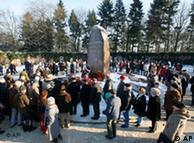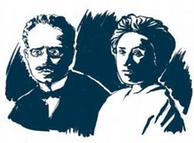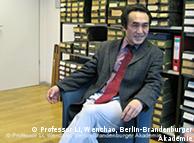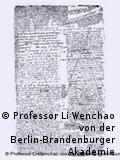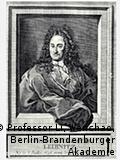A Relentless Updike Mapped America's Mysteries

John Updike at the Boston Public Library in 2006. More Photos >
Endowed with an art student's pictorial imagination, a journalist's sociological eye and a poet's gift for metaphor, John Updike — who died on Tuesday at 76 — was arguably this country's one true all-around man of letters. He moved fluently from fiction to criticism, from light verse to short stories to the long-distance form of the novel: a literary decathlete in our age of electronic distraction and willful specialization, Victorian in his industriousness and almost blogger-like in his determination to turn every scrap of knowledge and experience into words.
Related
John Updike, a Lyrical Writer of the Ordinary, Is Dead at 76 (January 28, 2009)
Updike's Stories: Some Paths Traveled, Some Not Taken (January 28, 2009)
Excerpts: A Sampler of John Updike's Prose (January 28, 2009)
Times Topics: John Updike
It is as a novelist who opened a big picture window on the American middle class in the second half of the 20th century, however, that he will be best remembered. In his most resonant work, Mr. Updike gave "the mundane its beautiful due," as he once put it, memorializing the everyday mysteries of love and faith and domesticity with extraordinary nuance and precision. In Kodachrome-sharp snapshots, he gave us the 50's and early 60's of suburban adultery, big cars and wide lawns, radios and hi-fi sets, and he charted the changing landscape of the 70's and 80's, as malls and subdivisions swallowed up small towns and sexual and social mores underwent a bewildering metamorphosis.
Mr. Updike's four keenly observed Rabbit novels ("Rabbit, Run," 1960; "Rabbit Redux," 1971; "Rabbit Is Rich," 1981; and "Rabbit at Rest," 1990) chronicled the adventures of one Harry Rabbit Angstrom — high school basketball star turned car salesman, householder and errant husband — and his efforts to cope with the seismic public changes (from feminism to the counterculture to antiwar protests) that rattled his cozy nest. Harry, who self-importantly compared his own fall from grace to this country's waning power, his business woes to the national deficit, was both a representative American of his generation and a kind of scientific specimen — an index to the human species and its propensity for doubt and narcissism and self immolation.
In fulfilling Stendhal's classic definition of a novel as "a mirror that strolls along a highway," reflecting both the "blue of the skies" and "the mud puddles underfoot," the Rabbit novels captured four decades of middle-class American life. Mr. Updike's stunning and much underestimated 1996 epic, "In the Beauty of the Lilies," tackled an even wider swath of history. In charting the fortunes of an American family through some 80 years, the author showed how dreams, habits and predilections are handed down generation to generation, parent to child, even as he created a kaleidoscopic portrait of this country from its nervous entry into the 20th century to its stumbling approach to the millennium.
Producing roughly a book or so a year, Mr. Updike tried throughout his career to stretch his imagination. To the novels starring Rabbit — perhaps the self Mr. Updike might have been had he not become a writer — he added a series of books about Bech, another alter ego described as a "recherché but amiable" Jewish novelist afflicted with acute writer's block. While Bech boasted a modest oeuvre of seven books and remained a second-string cult author, his creator was blessed, as he once wrote of Nabokov, with an "ebullient creativity," and his work, too, gave the happy impression of "a continuous task carried forward variously, of a solid personality, of a plentitude of gifts explored, knowingly."
In other novels, Mr. Updike ventured even farther afield. "The Centaur" (1963) infused Joycean myth into its tender portrait of a well-meaning schoolteacher. "The Coup" (1978) conjured up an imaginary African kingdom called Kush and its imperial leader Colonel Ellelloû. And "The Witches of Eastwick" (1984) and its sequel, "The Widows of Eastwick" (2008), depicted heroines who were supernatural sorceresses with the power to conjure and maim. These experiments did not always work. "S." (1988) used Hawthorne's "Scarlet Letter" as a jumping-off point for a crude attack on feminists. "Seek My Face" (2002) devolved into a ham-handed and thoroughly unconvincing improvisation on the life of Jackson Pollock. And "Brazil" (1994), brimming over with undigested research and bad dialogue, stood as an embarrassing effort to translate the Tristan and Iseult legend to South America.
Indeed Mr. Updike's strongest work remained tethered to the small town and suburban worlds he knew firsthand, just as many of his heroes shared the same sort of existential fears the author acknowledged he had suffered as a young man: Henry Bech's concern that he was "a fleck of dust condemned to know it is a fleck of dust," or Colonel Ellelloû's lament that "we will be forgotten, all of us forgotten." Their fear of death threatens to make everything they do feel meaningless, and it also sends them running after God — looking for some reassurance that there is something beyond the familiar, everyday world with "its signals and buildings and cars and bricks."
But if their yearnings after salvation pulled them in one direction, Mr. Updike's heroes also found themselves tempted by sex and romantic misalliances in the here and now. Caught on the margins of a changing morality, unable to forget the old pieties and taboos and yet unable to resist the 60's promise of sex without consequences, these men vacillate between duty and self-fulfillment, a craving for roots and a hungering after freedom. As the author himself once put it, his heroes "oscillate in their moods between an enjoyment of the comforts of domesticity and the familial life, and a sense that their essential identity is a solitary one — to be found in flight and loneliness and even adversity. This seems to be my feeling of what being a male human being involves."
Although Mr. Updike's earliest stories could sound self consciously writerly and derivative — at their worst, O'Hara without the bite, Cheever without the magic — he soon found his own inimitable voice with "Pigeon Feathers" and "Rabbit, Run." Over the years, the stories and novels tended to track Mr. Updike's own life: couples wooed and wed and went their separate ways, and the hormonal urges of youth slowly became the quiescence of middle age.
In a series of overlapping stories about Joan and Richard Maple (collected in "Too Far to Go"), Mr. Updike created an indelible two-decade-long portrait of a marriage, chronicling how one couple created and then dismantled a life together, while tracing the imprint that time and age left on their relationship. Many of his later stories and novels seemed preoccupied with mortality and the ravages of time, featuring characters grappling with the looming prospect of their own demise with a mixture of anger, grace and resignation and looking back upon their youth in an often cloudy rear view mirror.
As for Mr. Updike's collections of nonfiction (including "Hugging the Shore," "Odd Jobs" and "Due Considerations"), they not only showcased his copious gifts as a critic — as a celebrant of other artists' work and a sometimes acerbic literary anthropologist — but they also attested to his compulsion to enclose between the covers of a book every snippet of his work. These volumes featured thoughtful musings on contemporaries like Saul Bellow and Norman Mailer, and erudite essays on masters like Melville and Hawthorne, but they also included such effluvia as picture captions the author wrote for a Playboy spread on Marilyn Monroe and dutiful responses to questions posed by magazines ("What is your favorite spot in and around Harvard?").
In one of these collections, Mr. Updike summed up his love of his vocation: "From earliest childhood I was charmed by the materials of my craft, by pencils and paper and, later, by the typewriter and the entire apparatus of printing. To condense from one's memories and fantasies and small discoveries dark marks on paper which become handsomely reproducible many times over still seems to me, after nearly 30 years concerned with the making of books, a magical act, and a delightful technical process. To distribute oneself thus, as a kind of confetti shower falling upon the heads and shoulders of mankind out of bookstores and the pages of magazines is surely a great privilege and a defiance of the usual earthbound laws whereby human beings make themselves known to one another."
米作家ジョン・アップダイクさん死去
- 2009年01月28日 05:09 発信地:ニューヨーク/米国


米ニューヨーク(New York)の国連(UN)本部で記者会見に臨む作家ジョン・アップダイク(John Updike)さん(2004年11月30日撮影)。(c)AFP/Mandel NGAN
【1月28日 AFP】(一部更新)ピュリツァー賞(Pulitzer Prize)を2度受賞した米国の作家、ジョン・アップダイク(John Updike)氏が27日、マサチューセッツ(Massachusetts)州で肺がんのため死去した。76歳。出版大手のアルフレッド・A・クノッフ(Alfred A. Knopf)社が伝えた。
アップダイク氏は米国で最も多くの作品を残した作家の1人というだけでなく、米国自身を描き出した最も著名な作家の1人でもあった。
「アップダイク氏は、別の時代から現れた幻影のように、現代文学のシーンをさまよっていた。米国文学の最後の偉人だ」とウェブサイト「The Salon」は掲載している。
半世紀にわたる作家生活の中で、『走れウサギ(Rabbit, Run)』で始まる「ウサギ」シリーズなどを残し、ピュリツァー賞を2度受賞。誰もが知る作家となった。
詩作もしたアップダイク氏の作品は叙情的で、読みやすかった。25作の小説に加え、少なくとも12作の短編集と、100点以上の短編、詩、文芸批評を発表し、米誌ニューヨーカー(New Yorker)には書評も寄せた。
■思索的な人生の出発点
アップダイク氏の関心は幅広かったが、基盤となったのは第二次世界大戦後の経済成長の中で経験した地方の暮らしだった。
アップダイク氏は、ペンシルベニア(Pennsylvania)州の農場で過ごした病弱な子ども時代のおかげで、思索的な人生が送れたと話したことがある。
Academy of Achievementによれば、「アップダイク氏は乾癬や口ごもり、病気のせいで友だちと一緒に遊ぶことはできなかった。執筆に慰めを見出し、ハーバード大学(Harvard University)で奨学金をもらった」という。
大学では有名な風刺雑誌「ランプーン(Lampoon)」の編集をするようになり、卒業後すぐにニューヨーカー誌で詩や小説を発表した。
1958年には詩集『The Carpentered Hen and Other Tame Creatures』を発表。デビュー小説『プアハウス・フェア(The Poorhouse Fair)』は好評で、次に発表した『走れウサギ』はさらに評価が高かった。
『走れウサギ』の主人公ハリー・アングストローム(Harry Angstrom)の性的行動の描写は当時としては衝撃的だったが、修正を加えると幅広い支持を獲得した。その後に印刷された『走れウサギ』では、当初の表現に戻されている。
■一貫したテーマ
祖父がキリスト教長老派教会の牧師だったアップダイク氏は、宗教的信念が強かった。人間の存在における「3つの偉大な神秘」を、性、芸術、宗教だと言ったことがある。
こうしたテーマは、喜劇的な要素、米国東海岸という舞台設定と共に、1968年の『カップルズ(Couples)』や1984年の『イーストウィックの魔女たち(Witches of Eastwick)』など、アップダイク氏の作品のいたる所に見られる。ロードアイランド(Rhode Island)州の小さな町と魔女、性を描いた『イーストウィックの魔女たち』は、ハリウッド(Hollywood)で映画化された。
2008年には、『イーストウィックの魔女たち』の続編で、アップダイク氏最後の小説となった『The Widows of Eastwick』が発表された。(c)AFP










